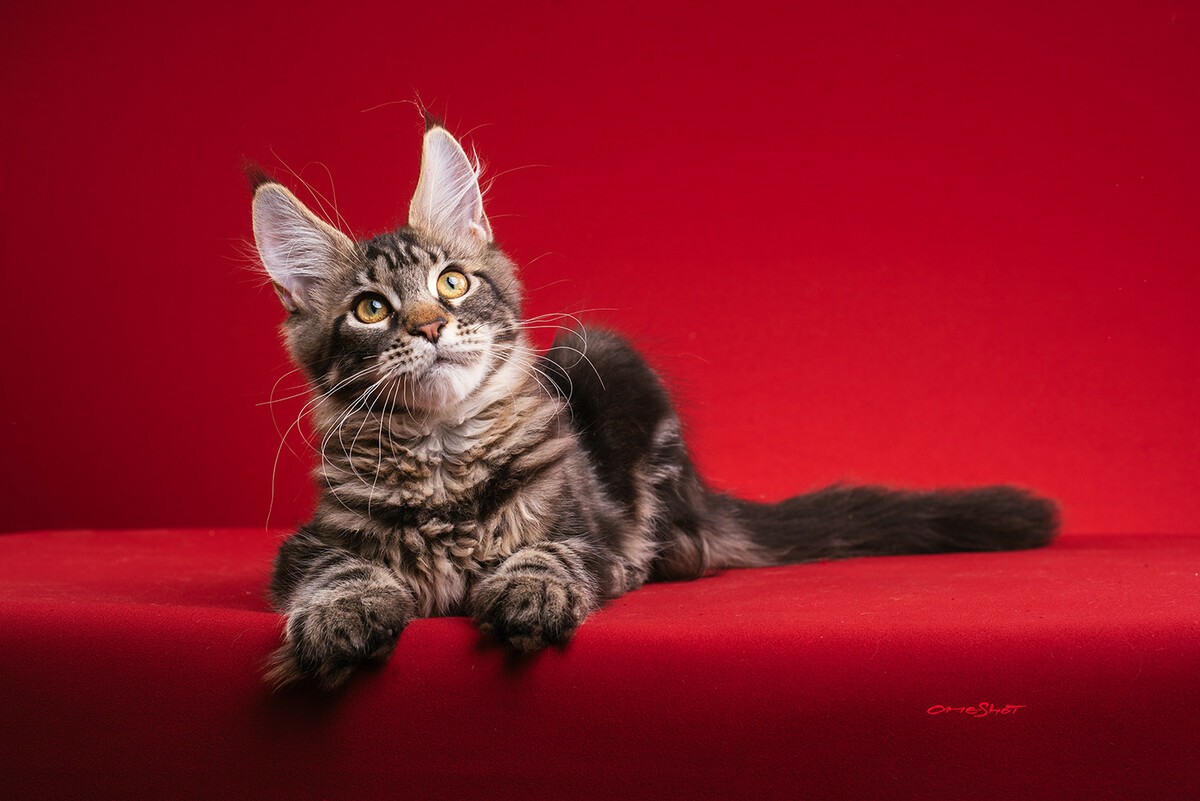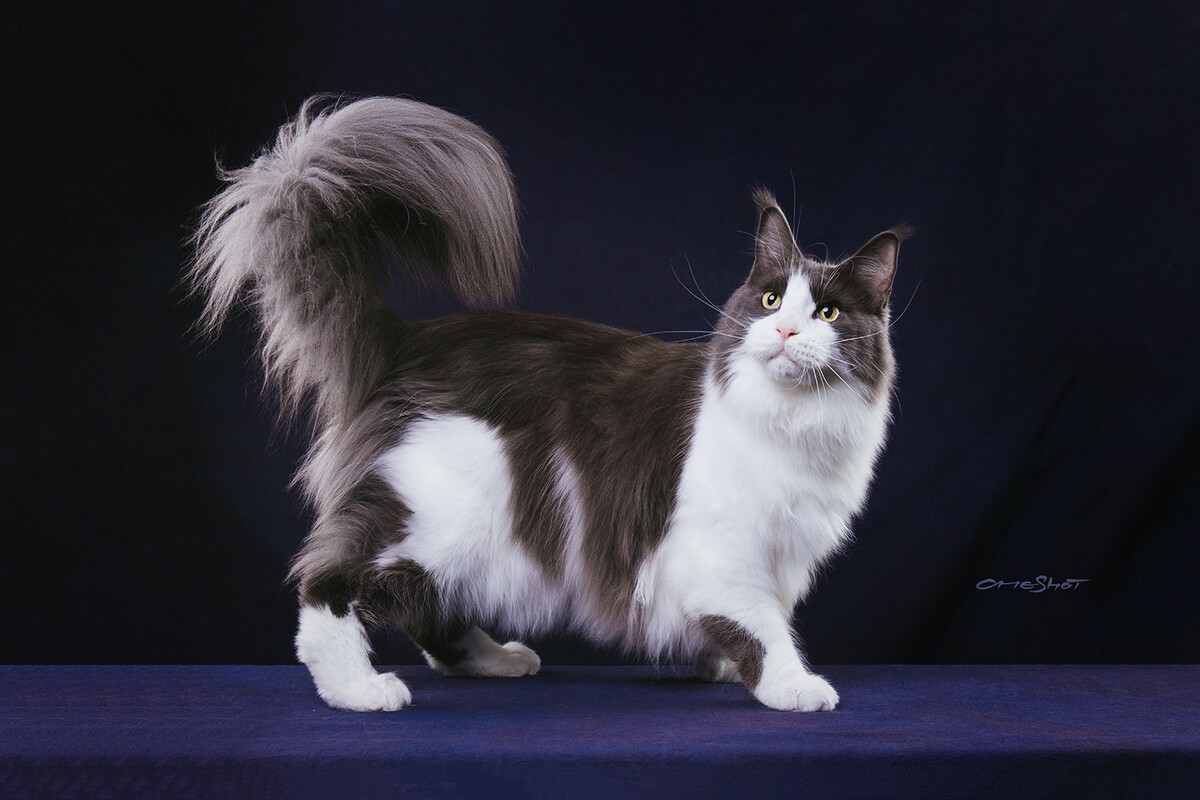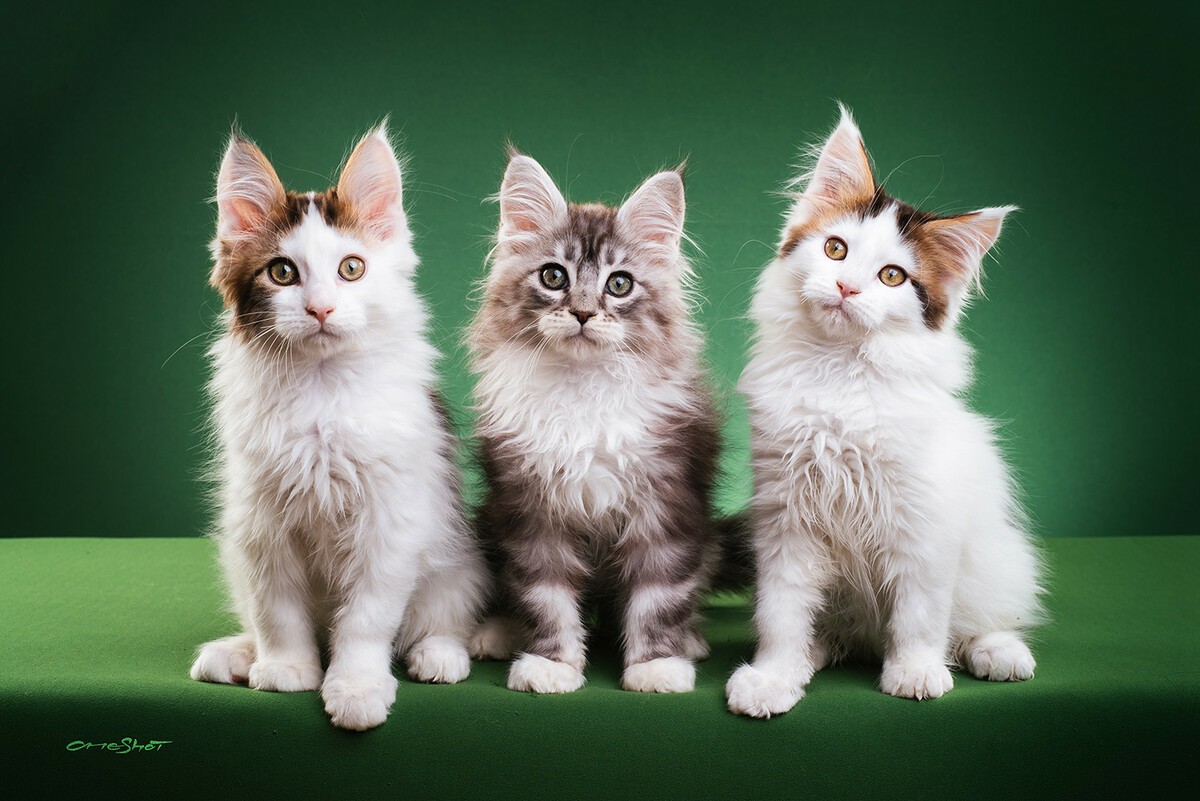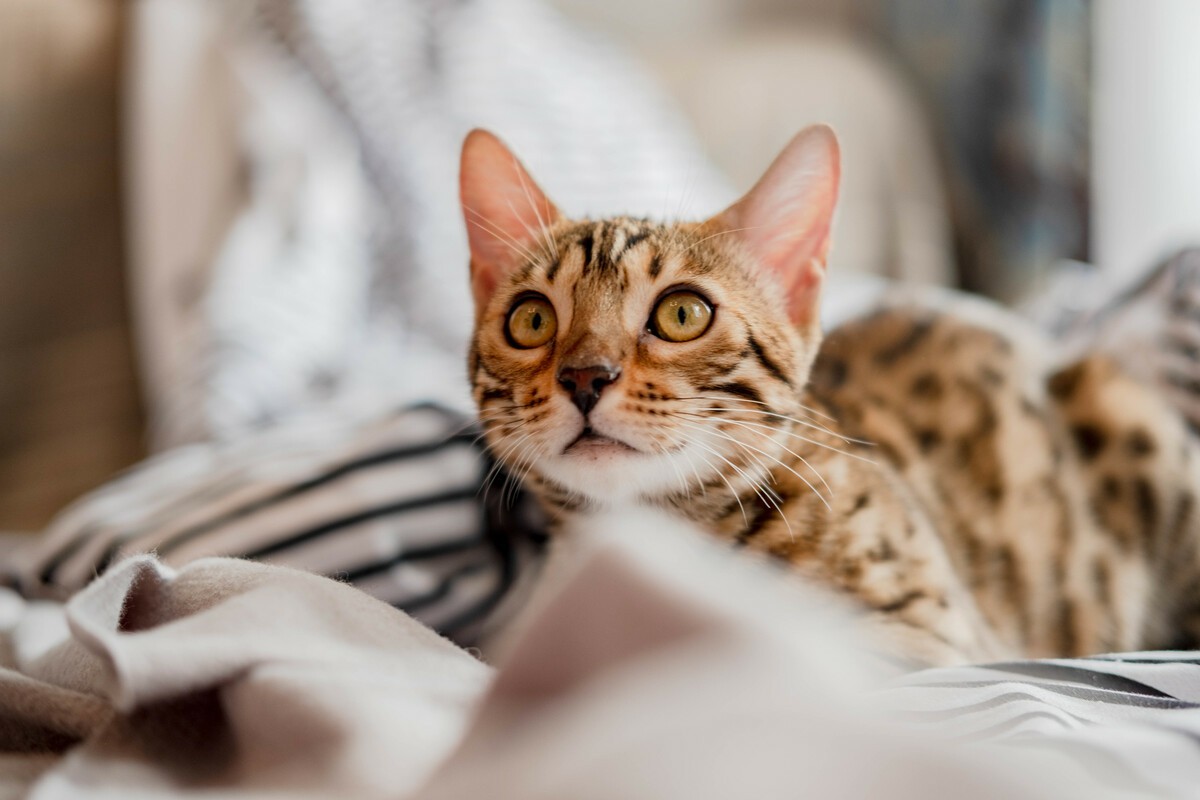Having a cat as your pet is not an easy job, i.e., if you believe that they are low maintenance pets and would just require an occasional bath, brush or trim.
The truth is when you are adopting a cat or a kitten, you need to be prepared for the huge responsibility that comes along with the job, and that is, taking appropriate care of their grooming needs.
If you own a Maine Coon cat, there is no need to fuss about their bathing needs since most Maine Coon owners and vets will recommend an occasional bath rather than a frequent one due to their single coats.
However, this does not mean that you won’t have to brush them more often or take them to the vet for regular health checkups.
Here we have compiled an extensive guide that will help you take appropriate care of your furry little friend whilst staying on top of their grooming needs!
BRUSHING AND GROOMING YOUR MAINE COON CAT

Grooming your Maine Coon regularly decreases the chances of hairballs and also prevents tangles. It also enables you to find out if any ticks, lumps, wounds, or other skin problems exist so you can take the right measures and make sure that your Maine Coon is healthy and happy.
Cats even have self-grooming capabilities. They do this by licking themselves from head to toe, and your grooming routine can contribute to the beauty of their coat. Here are a few tips on when and how to brush your Maine Coon:
WHEN TO BRUSH:
Always start at an early age. Younger kittens will easily get accustomed to the regular brushing hence your early training will help them in getting used to the grooming practices, so they won’t make a fuss or throw any tantrums later on.
Older cats, on the other hand, might get aggressive so you will need to train them first. All in all, grooming your Maine Coon is a lifetime job, from kitten-hood to adulthood, so it is important to get your Maine Coon used to the grooming.
Longhaired cats will need the brushing daily to prevent excessive shedding as opposed to the shorthaired cats.
HOW TO BRUSH:
Grooming can be a smooth and enjoyable experience when approached in short sessions and gently for both the cat and the owner.
- Start slowly with an aim to brush the body from head to toe (including the difficult parts as well, like behind the arms, back legs etc.)
- Do not fight your Maine Coon for the brushing. If it resists, try with just one section of the coat with appropriate gaps throughout the day, according to how comfortable your Maine Coon is.
Here are a few tips for a successful grooming session:
- Start your grooming routine as early as possible (when they are young)
- Use different brushes and combs (Try to avoid brushes with hard-wired or pinned bristles – Softer brushes keep the cats calm, but harder ones are more effective)
- Slowly work your way up to the harder brushes
- Use grooming gloves
- Keep the brushes where your Maine Coon usually naps.
- Also, use a human toothbrush for difficult-to-reach areas such as the areas surrounding the ears – make sure not to brush the insides of the ears!
- Make sure that the place you are conducting a grooming session is silent or peaceful, i.e., away from any potential distractions.
- Offer a treat afterward, so they can learn to associate it with a positive outcome.
- Always end a session on good terms.
BATHING YOUR MAINE COON CAT

As mentioned earlier, cats groom themselves using their teeth and tongue, but they are also usually fussy when it comes to grooming, therefore, regular brushing is crucial to keep their coat shiny and healthy.
They may need a bit more help from you when they have come in contact with something smelly or sticky – and for that, you can either spot clean or give them a full-fledged bath.
They will usually find the bathing process stressful, therefore do it right and only if necessary. Also, stay prepared by having the right supplies and tools handy. Here is how you should go about it:
1.WHAT SHAMPOOS TO USE?
Do NOT use human shampoos on cats as they dry out the skin. When preparing a water bath, use a deodorizing and cleansing shampoo that is made up of natural ingredients. For cats that have dry skin, try using a deep conditioning shampoo that is specifically made for dry skin.
You can even use other kinds of cat shampoos that take care of their coat like tick or flea control shampoos. These shampoos are designed to keep those pesky insects at bay, so it is recommended to use these at least once a month, or more if your Maine Coon indulges in outdoor activities.
It is recommended that you always check the label when buying pet shampoos to see if they are suitable for your species of cat. Also, make sure that you do not use a tick or flea control shampoo that is designed for dogs since it can be dangerous to your Maine Coon’s health.
2.GET THE SUPPLIES READY
Try preparing for the bath before you bring in your Maine Coon. Here is a list of supplies that you will need:
- Cat shampoo
- Dryer
- Towels
- Comb or a brush for longer hair
- A container or a jug for rinsing
- A towel or a rubber mat, placed in the tub or sink to prevent slipping
3.BATHING
- Brush your Maine Coon first to get rid of the dirt
- Fill the sink with enough lukewarm water to wash the cat
- If the cat starts scratching or biting during the bath or appears distressed, stop immediately and wait for your Maine Coon to calm down.
- Apply a tiny amount of cat shampoo with warm water to the stained area
- If you are washing the entire body, soap up the entire body excluding the head area.
- To clean their face, a damp towel is ideal. Do not try to splash water onto their face or dunk their head into the water.
- To rinse, fill the jug with lukewarm water and start pouring over the body, covering the cat’s ears and eyes.
- Repeat the above step if you are using a conditioner
- Make sure that you rinse off thoroughly to avoid your Maine Coon from swallowing any residual shampoo
- Dry your Maine Coon with a towel and also allow them to shake off the excess water.
- Use a hair dryer afterward if your Maine Coon is not frightened. Otherwise, you will have to work up to it. Do not get the drier too close to their body and don’t aim the drier towards their face or other sensitive areas of their body.
ALTERNATIVES TO BATHING
Bathing is not the only option when it comes to cleaning your Maine Coon. You can always use bath wipes that are designed for cats. These wipes can also be used to clean your Maine Coon in the hard-to-reach areas.
You can even use these for spot cleaning, which also allows you to find out if they are allergic to the wipes. On the other hand, these wipes tend to dry out the coat so only use them when needed.
Most cats, like Maine Coons, rarely need a bath, but it is not set in stone and largely depends on how outgoing, playful and social your Maine Coon is. Maine Coons are known to be quiet, sluggish and cuddly pets and, therefore, do not require frequent baths.
However, if you are of opposite nature and do not leave your Maine Coon behind, you may need to bathe your Maine Coon more often.
TRIMMING YOUR MAINE COON CAT’S CLAWS
It is important that those sharp, too long claws do not cause any harm to the cat nor to your pricey furniture. You will also be able to easily play and have a nice time with your Maine Coon without worrying about the painful skin punctures and scratches if their claws are nicely trimmed.
Apart from that, trimming the claws also brings a whole lot of benefits for your Maine Coon, like avoiding the pain of broken claws caused due to the tips getting stuck in the carpet or furniture. If you are not as skilled yet, you will need a professional’s help.
If you are willing to learn, here are a few steps to help you perfect the art of clipping those pointy claws:
- Buy an appropriately sized and a quality nail clipper (Cat clippers are different from other animals)
- Allow your Maine Coon to get used to the clippers (If already exposed, the trimming should be an easy process)
- Start by moving close to the paws, touching them and handling them gently
- Make sure they are comfortably sitting in your lap and are not getting ready to jump
- If you find the cat’s ears folding back, a moving tail or any other signs of tension, stop immediately and wait for it to relax again.
- Once your Maine Coon feels relaxed, progress to pressing their paws gently so that the nails are exposed.
- If they are comfortable, touch the clipper to the paw (Repeat this until the cat feels relaxed around the clipper)
Start with clipping one sharp tip. (Sometimes your Maine Coon will only allow one or two clippings in one sitting, so stay patient)
HOW AND WHEN TO CHECK YOUR MAINE COON CAT FOR POSSIBLE HEALTH ISSUES

As stressed earlier, just buying a Maine Coon cat and cuddling it in your arms does not fulfill your responsibility of taking care of your pet friend. If that is the case, you will frequently find your Maine Coon staring at you, crying “Look beyond the Brush Hooman”.
Conducting a regular health check is a lot easier than you may think. You do not need to be prepared for the task. You can start the checkup on your Maine Coon as soon as you sit down and he or she jumps onto your lap, demanding a scratch.
This way, you will be able to detect any possible red flags earlier rather than when they evolve into major health issues. However, keep in mind that the DIY checks cannot be considered a replacement for the annual visits to the veterinary clinic for professional health checkups.
Let’s start with the ears:
CHECK THE EARS
Check your Maine Coon’s ears for any bleeding, sores, debris, inflammation, and excessive buildup of wax or any other kind of discharge. One other major concern is ear mites, which may be difficult to see with the naked eye but usually results in a brown-reddish discharge.
Cats even tend to scratch their ears a lot when they have ear mites.
A little bit of wax may be normal, but the presence of unpleasant odors is a warning sign. Also look for any bumps, marks, thickening, scaling, lesions, redness or lumps. If you spot any of the signs, consult your local vet immediately.
CHECK THE NOSE
If your Maine Coon cat is healthy, you will find its nose to be smooth and moist. A gentle touch will tell you whether your Maine Coon has any kind of swelling, lumps or bumps around the nasal area. Ulcers are also a thing that you should look out for.
They take a long time to heal; therefore, any discharge from your Maine Coon’s nose should alarm you.
CHECK THE EYES
Your Maine Coon’s big blue eyes should be bright, clear, and free from any swelling, redness or discharge. Presence of any of these signs may indicate an infection, which is when you should immediately contact the veterinary clinic for an appointment.
MOUTH, GUMS & TEETH
Teeth of a healthy cat appear to be clean and white and are free from any chippings. Check the gums for lesions or sores. A healthy cat should have pink gums without any swelling, bleeding or redness.
You should also check your Maine Coon’s mouth for any swelling lesions, lumps or ulcers. When your Maine Coon opens their mouth, you should not smell any foul order.
If you do and the teeth keep getting yellowish and the odor keeps getting worse, you should immediately take them for an oral health check-up.
Like you maintain your oral hygiene, your Maine Coon needs the same attention. All you need is a good quality pet toothpaste and a finger brush.
BREATHING
Like any other mammal, cats are also warm-blooded and have normal breathing patterns. You cat’s breathing should be effortless and even. If you notice any signs of laboring or wheezing, an erratic rhythm, or shortness in breath, call your vet at a decent time for a short consultation.
COAT AND SKIN
A cat’s coat and skin can tell a lot about its health. Maine Coons are muscular cats with a thin but soft and silky medium length fur coat that does not stain easily. If you find your Maine Coon engaged in excessive scratching, licking or chewing, it may be time for you to contact your vet.
Parasites, allergies, wounds and even stress can have an impact on your Maine Coon’s health. Therefore you should notice your Maine Coon’s coat and skin more often.
BODY AND MOBILITY
It cannot be stressed enough that you should check your Maine Coon’s body for any unusual swelling, lumps, or bumps more often. Similarly, look out for signs of tension or pain when you come in contact with their body or certain parts of the body.
If you are too observant, you may also notice signs of pain and stiffness that will indicate that it is time for a checkup.
CLAWS
This may be the basic lesson you need to learn when you keep a cat as your pet that indoor pets need regular trimming of their nails.
If you find the claws to be too long and you have experience in cutting them, do it immediately before you see scratches all over your leather sofa and pillows. Long nails can also be a health hazard and can injure your Maine Coon, or accumulate dirt particles that may be consumed when you cat licks her paws.
There is no shame if you do not have a steady hand. Just grab him/her in your arms and drive to a professional groomer for help.





Pingback: Can I Walk My Maine Coon Outside? You Can! - MOOKNOW CAT
Pingback: Why Your Maine Coon Cat Throws Up And What Might Help - MOOKNOW CAT